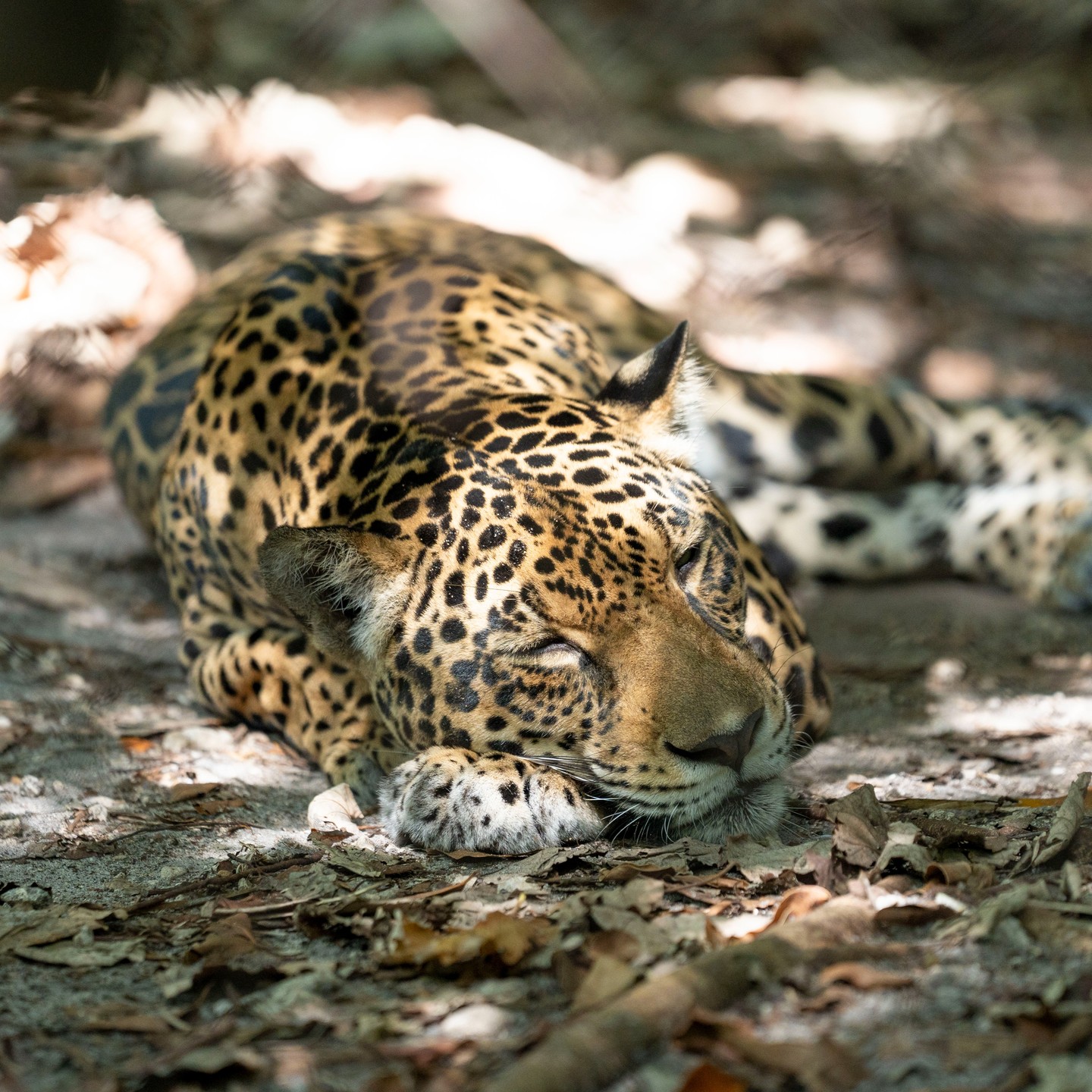- The camouflage abilities of jaguars
- The habitat and behavior of jaguars
- The role of zoology in understanding jaguar behavior
- The importance of zoo management in jaguar conservation
- Wildlife conservation efforts aimed at protecting jaguars
The camouflage abilities of jaguars are nothing short of phenomenal. As large, big-spotted cats, one might assume that jaguars are easy to spot in their natural environments. However, their camouflage capabilities allow them to blend seamlessly into their surroundings, making them incredibly challenging to detect. For instance, when observing Fiona or Zooka—two jaguars living in captivity—lying in the shade with dappled sunlight filtering through the foliage, one can see how effective their natural camouflage is. This intricate pattern of spots, also known as rosettes, serves to break up the outline of their bodies, thus rendering them almost invisible against a backdrop of vegetation and shadows. This sophisticated form of concealment is an evolutionary adaptation that has enabled jaguars to become apex predators in their habitats.
Jaguars inhabit various environments, primarily tropical rainforests and areas such as scrublands, swamps, and grasslands. Their behavior reflects their solitary nature, often marked by large home ranges they regularly patrol. Jaguars are ambush predators, leveraging their stealth and camouflage to get close to their prey before launching a surprise attack. Their diet is extremely varied, consisting of more than 85 different prey species, including deer, peccaries, capybaras, and even caimans. This opportunistic feeding behavior underlines their adaptability and resourcefulness.
The role of zoology in understanding jaguar behavior is crucial. Through meticulous observation and study, zoologists have gathered extensive data on these elusive cats’ behavioral patterns, diet, and breeding habits. Such knowledge is not just academically enriching but also vital for effective conservation strategies. For example, understanding the territorial behaviors of jaguars helps in mapping out conservation areas to ensure minimal human-wildlife conflict. Furthermore, insights into their reproductive cycles aid in captive breeding programs, critical for maintaining genetic diversity in jaguar populations.
Zoo management plays a pivotal role in jaguar conservation. Zoos serve as sanctuaries where jaguars can live in a secure environment, often far removed from the threats that endanger their wild counterparts. In managed care, jaguars can be closely monitored for health issues, ensuring they receive medical treatment promptly. Behavioral enrichment programs are also fundamental, providing mental and physical stimulation that mimics their natural activities. This can include creating complex habitats with hiding spots, varying terrain, and interactive feeding practices that encourage natural hunting behaviors. Effective zoo management not only improves the quality of life for these animals but also serves as a platform for educational outreach and raising public awareness about conservation issues.
Wildlife conservation efforts to protect jaguars encompass various activities, from anti-poaching initiatives to habitat restoration projects. In the wild, jaguars face myriad threats, including habitat destruction, human-wildlife conflict, and illegal poaching. Conservation organizations work tirelessly to combat these issues through various means. For instance, one of the most effective strategies is creating protected areas where jaguars can roam freely without the threat of human encroachment. Additionally, programs geared toward mitigating human-jaguar conflict, such as compensating farmers for livestock losses caused by jaguars, have proven highly successful. Moreover, educating local communities about the ecological importance of jaguars and involving them in conservation efforts fosters a sense of stewardship and collective responsibility.
Despite these efforts, jaguars’ plight remains precarious, and their populations are still declining in many areas. Continuous research and adaptive management strategies are crucial for making headway in their conservation. Initiatives such as radio-collaring and satellite tracking have provided invaluable data on jaguar movements and behaviors, helping to refine conservation strategies further. Collaborative efforts involving governments, NGOs, researchers, and local communities are essential for creating a sustainable future for jaguars.
In conclusion, jaguars, with their impressive camouflage, intriguing behaviors, and critical ecological role, are a testament to the wonders of the natural world. Through dedicated research, effective zoo management, and robust conservation efforts, it is possible to safeguard these magnificent animals for future generations to appreciate and admire. By fostering a deeper understanding and respect for jaguars, we take an essential step toward ensuring the preservation of biodiversity and the health of ecosystems worldwide.
*****
Source Description
For a big spotted cat, jaguars can be easy to miss.
There is no better example of their camouflage capabilities than when Fiona or Zooka are lying in the shade with dabbled sunlight. A good reminder to look twice when going by their habitat!


